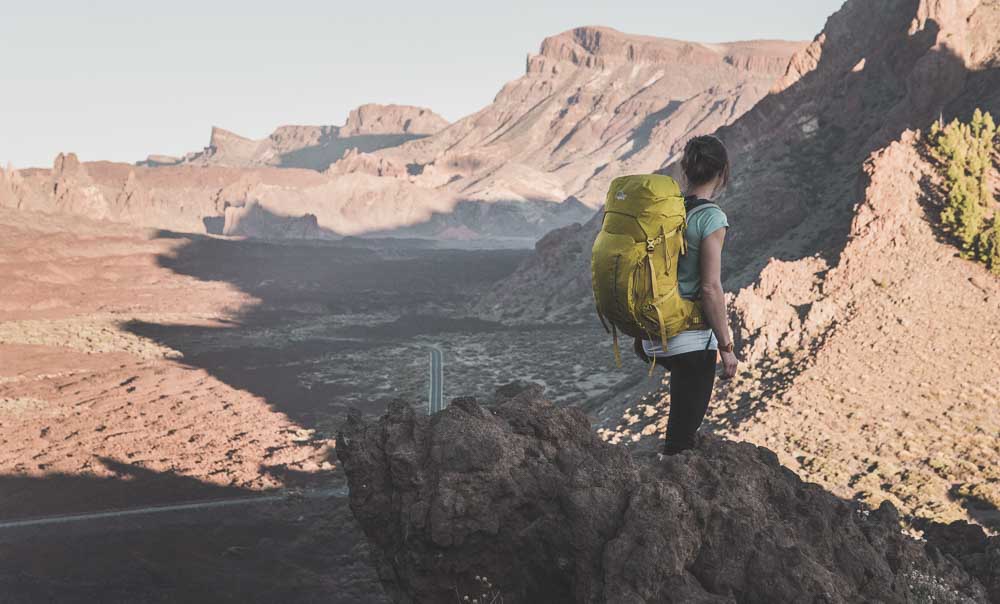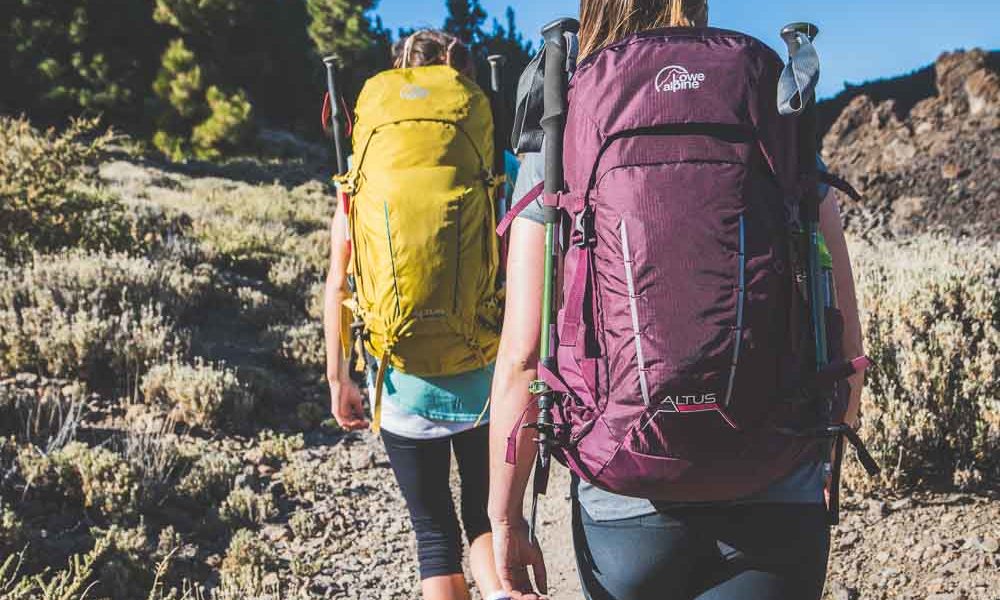We’ve just spent a morning with Lowe Alpine pack designer Dan Jenkin, talking about his background and the story behind the brand’s packs, and we took the opportunity to ask him for his top 5 tips when it comes to deciding which pack you need. Then we added 5 Gearhead tips of our own. So here we go…!
Part 1: Pack Man Dan’s tips
1. Fabric choice
Dan says taking into account what the pack’s going to be used for, look for a fabric that’s decently tough, but not too heavy – you’re going to have to carry it around remember. Ideally you want a heavier-duty, reinforced fabric on the base of the pack where it’ll take a pasting from the ground or scrapes when descending technical terrain facing out. If you’re going to carry skis or ice axes, make sure there’s reinforcement in those areas too.
2. The carry system
It doesn’t matter how many neat features a pack has, at its heart is the carry system. The challenge is to find one that’s flexible enough for comfort and mobility but still offers enough support to carry the expected load without you feeling splinted and restricted. Load the pack up and try it on before buying.
3. Accessibility
Make sure the pack has openings in the places you want. If you habitually dump stuff you need at the bottom of your pack, a side-entry zip might make sense. If you prefer top-entry, make sure the opening system is easy to use even with gloves. Same goes for zips and pockets. Are there enough of them? Are they big enough for what you want them to do?
4. Make sure it fits
Some packs come in fixed lengths but different sizes. Others have adjustable back lengths instead or as well as different sizes, but for a pack to carry right it needs to be the right length to match your back or to be adjustable enough that it fits just right. The best way of getting it right? Dan reckons you can’t beat a proper fitting at a specialist shop with the pack loaded appropriately.
5. Capacity
It might sound basic, but make sure you choose a pack that’s big enough to handle the largest loads you’re likely to carry. Some packs are extendable using floating or semi-floating lids for occasional ‘over loading’, but this can make the pack feel overly tall. Pockets can up effective capacity, but strapping stuff to the outside of the pack regularly makes for a clumsy carry, so try to avoid if you can.

Part 2: Gearhead’s pack tips
6. Be aware of women’s specific packs
If you’re a woman, start your search with women’s-specific packs models. Women aren’t just small men, their proportions, particularly in the lower back and hip area differ markedly, so – for example – the ND (women’s) version of the Lowe Alpine Altus has a lumbar curve that’s approximately one inch higher to suit the female body. Other differences are narrower shoulder strap spacing and shorter back lengths. It’s not just about the colour.
7. Mind out for mesh
Stretchy mesh is great for stashing stuff rapidly in side and front pockets, but with extended use and particularly if it rubs against rocks or other abrasive surfaces, it tends to wear out faster than normal fabrics. If you’re buying a mountain pack, look for designs that don’t expose mesh to wear.
8. Happy hydration sides
If you’re someone who uses a hydration system, make sure there’s a tube exit on the side you favour. It might sound like a minor detail, but out experience is that most people prefer their tube to sit on a particular side. A central opening gives choice, one on either side allows better routing. One on the wrong side is just annoying.
9. Pick your pockets
Everyone’s different, but have a think about whether the pocket arrangement on your chosen pack works for you. Do you like easily accessible hip-belt pockets for example? Or a front stash one for damp waterproof storage. is there a lid pocket for easy access to things like head-torch, hat and gloves and is it big enough.
10. Always try a pack fully loaded before buying
A good outdoors shop will be able to load your pack up with a realistic load either using weighted bags or sundries like climbing ropes and it’s a good idea to try the pack on, adjust it properly to fit and then go for a stroll around the shop before buying. Trying on an empty pack really doesn’t tell you much about how it fits or carries. It might take longer, but it’s worth it if you want the pack to carry just right.
More info at: www.lowealpine.com






